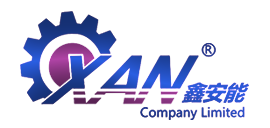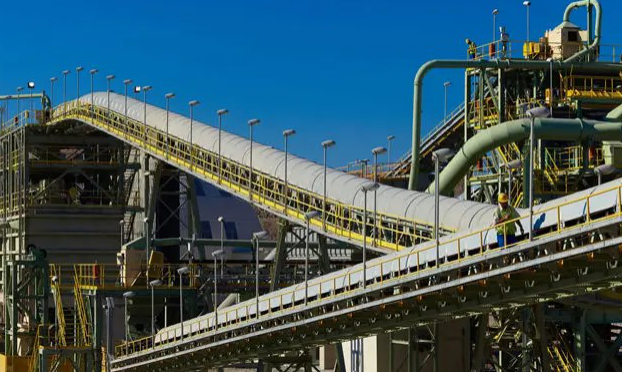
(1) Blast drilling: After the irradiation of the continuous laser, the material forms a pit in the center, and then the molten material is quickly removed by the oxygen flow coaxial with the laser beam to form a hole. Generally, the size of the hole is related to the thickness of the plate, and the average diameter of the blasting perforation is half of the plate thickness, so the blasting perforation diameter of the thicker plate is larger and not round, so it is not suitable for use on parts with higher requirements (such as petroleum screen pipes), and can only be used on waste materials. In addition, the spatter is large because the oxygen pressure used for the piercing is the same as at the time of cutting.
(2) Pulse drilling: (Pulse drilling) uses a pulse laser with high peak power to melt or vaporize a small amount of material, and air or nitrogen is commonly used as an auxiliary gas to reduce the expansion of the hole due to exothermic oxidation, and the gas pressure is smaller than the oxygen pressure during cutting. Each pulsed laser produces only a small jet of particles that progressively deepens, so the thick plate perforation time takes a few seconds.
As soon as the piercing is complete, the assist gas is replaced with oxygen for cutting. In this way, the diameter of the piercing is smaller, and the quality of the piercing is better than that of blasting perforation. The lasers used for this purpose should not only have a high output power; More important is the temporal and spatial characteristics of the time beam, so the general cross-flow CO2 laser cannot adapt to the requirements of laser cutting. In addition, pulse perforation also requires a more reliable gas circuit control system to realize the switching of gas type, gas pressure and perforation time.

Welding method of arc welding of conveyor bracket electrode
(1) Arc striking
Scratching method--- first align the welding rod with the weldment, and then gently scratch the welding rod on the surface of the weldment like a match, igniting the arc, and then quickly lift the welding rod 2-4mm, and make it burn stably.
Percussion method--- align the end of the electrode with the weldment, then bend the wrist downward, make the electrode touch the weldment slightly, and then quickly lift the electrode 2~4mm, and then flatten the wrist after igniting the arc to keep the arc burning stably. This arc striking method will not scratch the surface of the weldment, and is not limited by the size and shape of the weldment surface, so it is the main arc striking method used in production. However, the operation is not easy to master, and it is necessary to improve the proficiency.
The following precautions should be paid attention to when arcing:
1) There should be no oil and rust at the arc striking place to avoid porosity and slag inclusion.
2) The lifting speed of the electrode should be appropriate after contact with the weldment, it is difficult to start the arc if it is too fast, and the electrode and the weldment are glued together to cause a short circuit if it is too slow.
(2) Carriers
The transport bar is the most important link in the welding process, which directly affects the external forming and internal quality of the weld. After the arc is ignited, the electrode generally has three basic movements: gradually feeding in the direction of the weld pool, gradually moving along the welding direction, and swinging laterally.
The electrode is fed gradually in the direction of the weld pool--- both to add metal to the weld pool and to maintain a certain arc length after the electrode has melted, so the speed at which the electrode is fed should be the same as the speed at which the electrode melts. Otherwise, arc breakage or sticking to the weldment will occur.
The electrode moves in the direction of welding--- gradually forming a bead as the electrode continues to melt. If the electrode moves too slowly, the weld bead will be too high, too wide, and the shape will be untidy, and burn-through will occur when welding thin plates; If the electrode moves too fast, the electrode and the weldment will melt unevenly, the weld bead will be narrow, and even the phenomenon of non-penetration will occur. When the welding rod moves, it should be at an angle of 70-80 degrees with the forward direction to push the molten metal and slag to the rear, otherwise the slag flows to the front of the arc, which will cause defects such as slag inclusion.
Characteristics and industry applications of chain conveyor conveyor line
Chain plate material: carbon steel, stainless steel, thermoplastic chain, according to the needs of your products, you can choose different widths, different shapes of chain plates to complete the plane conveying, plane turning, lifting, descending and other requirements.
(3) Characteristics of chain plate line
1. The conveying surface of the chain conveyor is flat and smooth, the friction is small, and the transition of materials between the conveyor lines is smooth, which can convey all kinds of glass bottles, PET bottles, cans and other materials, as well as all kinds of bags.
2. The chain plate is made of stainless steel and engineering plastics, with a wide variety of specifications, which can be selected according to the conveying materials and process requirements, and can meet the different needs of all walks of life.
3. The chain conveyor can generally be directly washed with water or directly soaked in water. The equipment is easy to clean and can meet the hygiene requirements of the food and beverage industry.
4. The equipment layout is flexible. Horizontal, inclined and curved conveyors can be completed on a single conveyor line.
5. The equipment has simple structure, stable operation and easy maintenance.
6. The width of the direct chain plate is 63.5, 82.5, 101.6, 114.3, 152.4, 190.5, 254, 304.8, and the width of the turning chain plate is 82.5, 114.3, 152.4, 190.5, 304.8, which is widely used in the automatic conveying, distribution and packaging of food, canned food, medicine, beverage, cosmetics and detergents, paper products, condiments, dairy and tobacco.
TradeManager
Skype
VKontakte